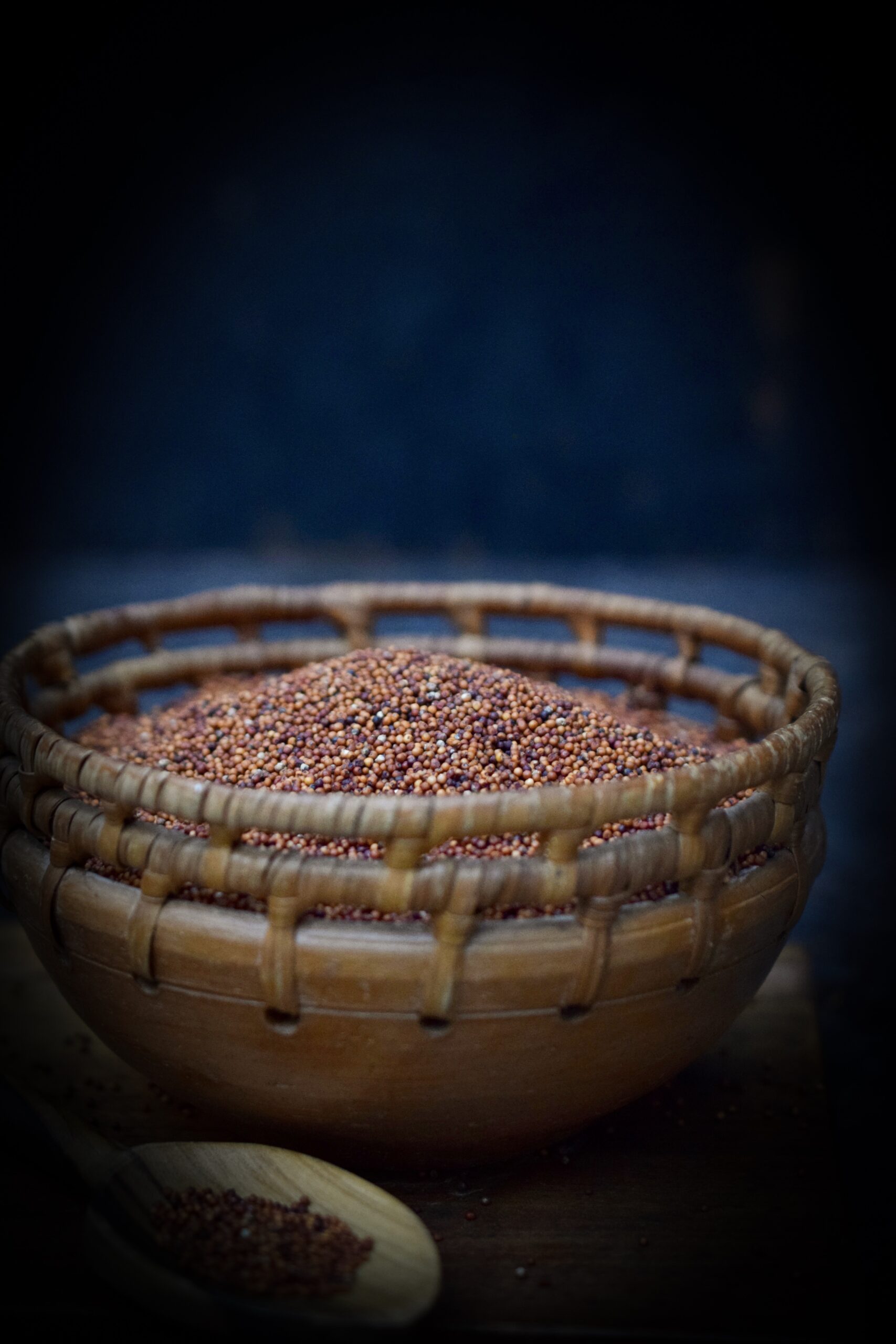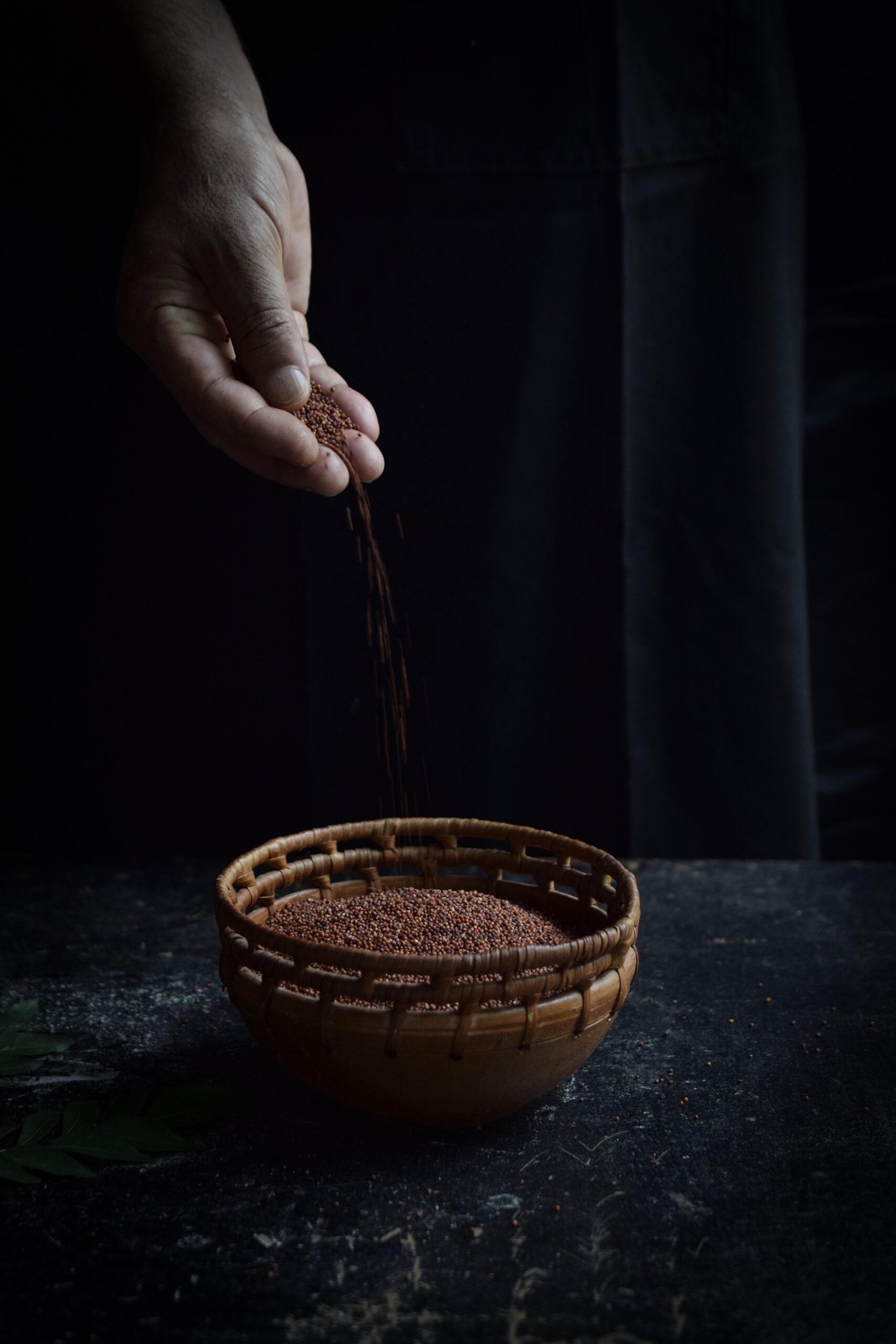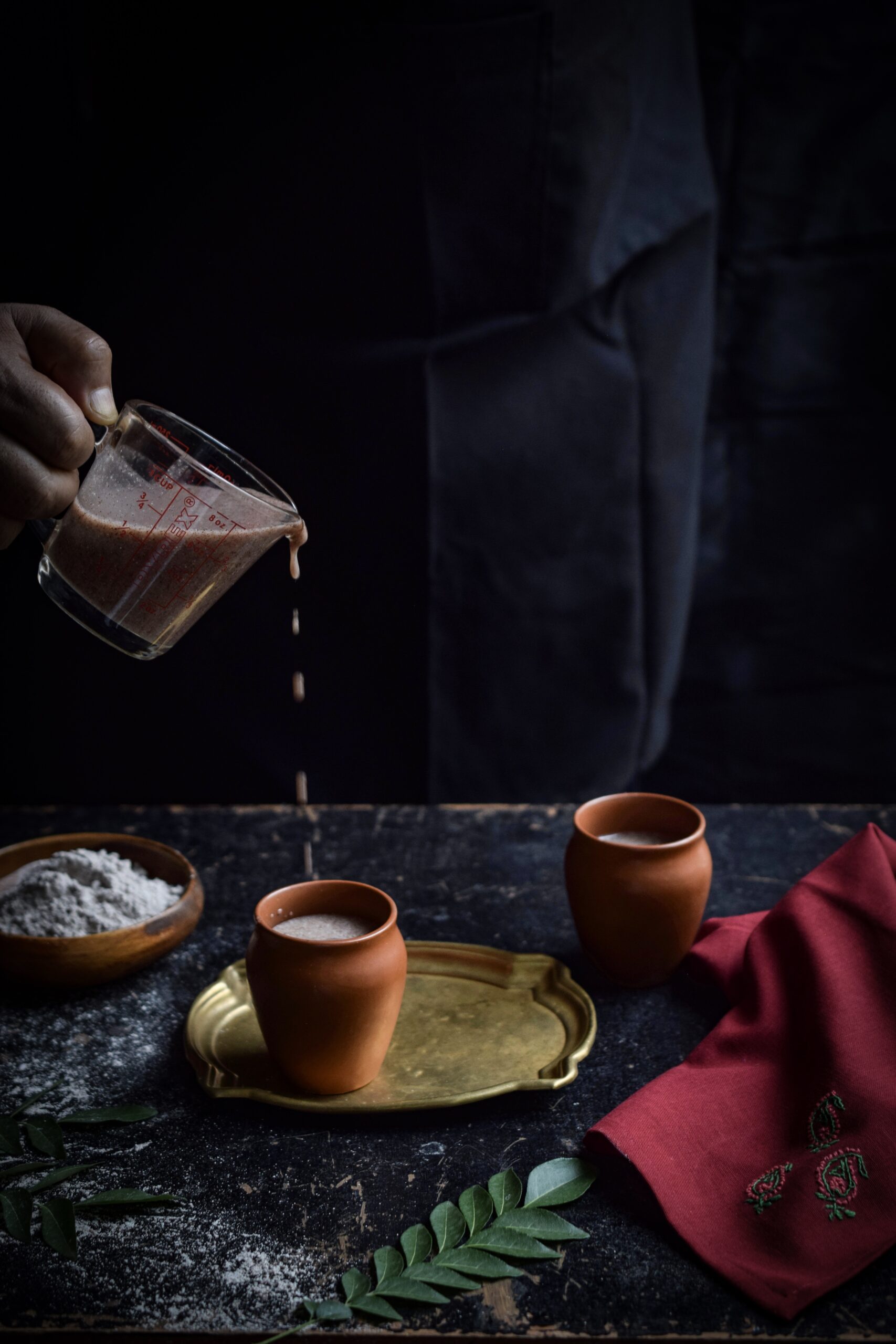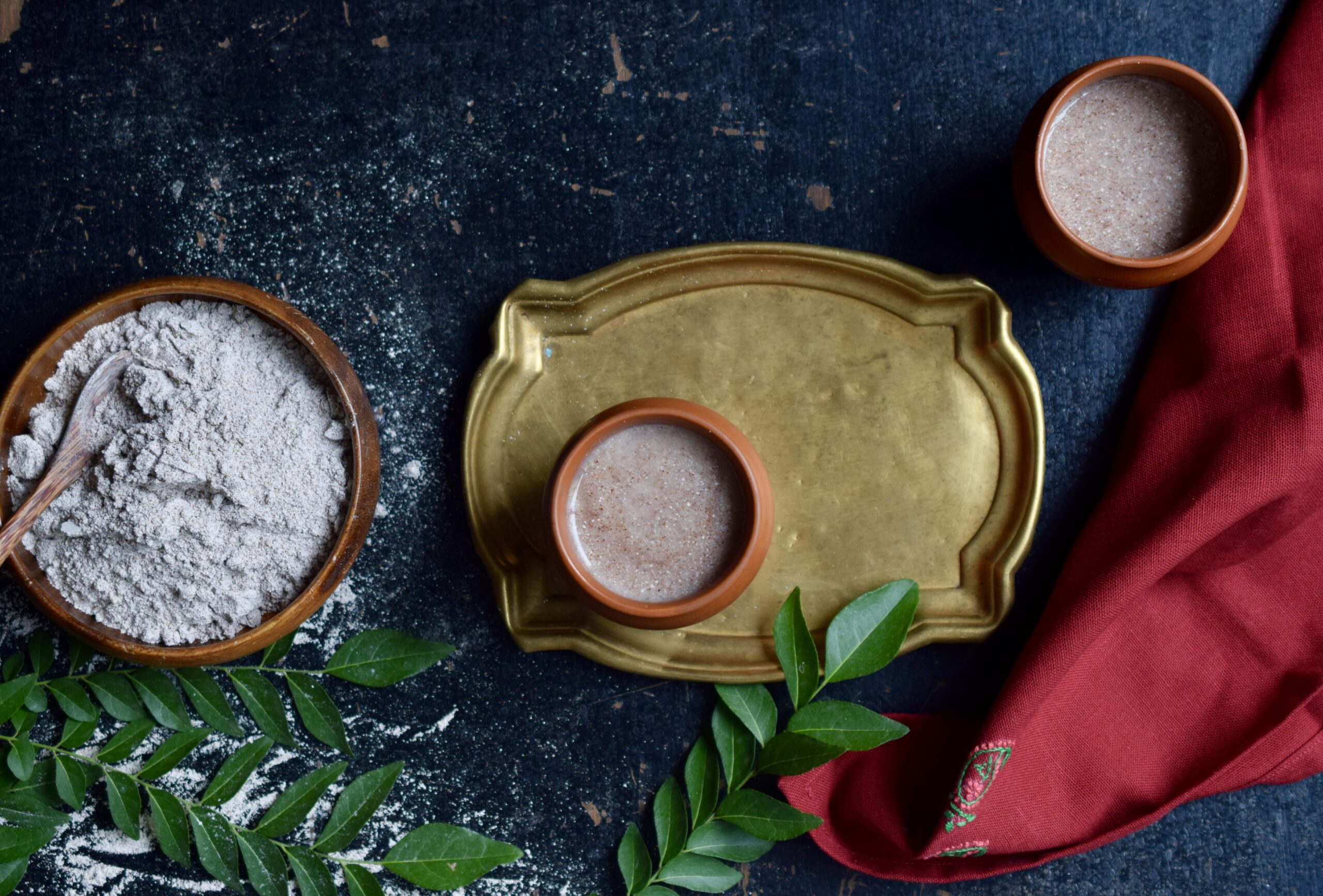When I was a little girl, the month of Aadi in Chennai meant music being blared from temple speakers and a general atmosphere of colour and sound on the streets. Just like with the funeral processions full of flowers and drumming, I thought all of it was pure celebration. Now, as an adult, I appreciate the nuances, but there is still something about this month that catches my eye – and more accurately, my sense of smell. For temples small and large through the city make ritual offerings to the Goddess, which are then distributed to all. The scent of freshly made koozh (pronounced koo-lu), a millet-based porridge, fills the air along with devotional songs.
The Tamil month of Aadi falls between mid-July and mid-August and heralds the onset of the monsoon. Aadi also ushers in the festive season: it is from here that Ganesh Chaturthi, Krishna Jayanthi, Navaratri and numerous other Hindu observance days follow. In Tamil culture, the month itself is regarded as special to the Goddess in her various manifestations, even though it is also considered inauspicious for things like weddings, purchasing land or moving to a new home. The scientific explanation given for why weddings are never conducted in Aadi is as follows: babies conceived in this month will be born in peak summer the following year, meaning the pregnant mother will have an especially uncomfortable final trimester and will undergo childbirth in stifling weather.
Similarly, there’s a pragmatic reason for serving lots of koozh at this time, because people worked the fields at this time of year, planting new saplings as the season turned, and this traditional dish gives a great deal of physical strength. So the dish being distributed for free in temples meant that everyone was able to receive this nutrition. It’s fascinating how so many customs are rooted in sensible measures. Another example is of neem leaves, which are sacred to the Goddess, and are strung afresh across the front door during Aadi. These help ward off insects and prevent diseases.

A trishoolam (trident) pierced by a lime, a common sight at the entrance of any Tamil temple to the Goddess.
The celebration of Aadi varies through Tamil Nadu, as do the kinds of koozh which are offered to the Goddess to ask for Her protection. Koozh is also traditionally non-vegetarian, but has become a very popular vegetarian staple. Over the past 15 years, it has also become a street food in Chennai. Unsurprisingly, its affordability and high nutrient value make it a hit among labourers and truckers, and the stalls themselves were formed by migrant workers from other parts of the state, as you can read in this article. This kind of development always makes me happy. You know I’m a big believer in the power of millets and fully support bringing them back into our daily diets.
So koozh is both a ritual offering (prasadam) and an ordinary part of Tamil cuisine. It is quite similar to another gruel known as kanji, made from rice. When I was thinking of what kind of koozh variant to share a recipe of, it was ragi kanji that came to mind. It combines the millet-rich goodness of koozh with the comfort food that is rice porridge.

Ragi has been grown in South India for over 2000 years, when it was first brought here from the East African highlands to which it is indigenous. It is most often known by this popular name, but it is also called “kezhvaragu” in Tamil, “finger millet” in English and “nachni” in Hindi.
The sprouted flour that is used in this ragi kanji is rich in calcium, iron, essential amino acids (especially methionine, which is absent from diets overly reliant on polished rice, plantains or maize) and fibre, and helps with weight loss due to the lack of starch. Since ragi grows abundantly in South India, it is also a cheap and healthy alternative to milk.
The ragi kanji below is a simple vegetarian dish (vegan, in fact, if you don’t use buttermilk or honey as flavouring options) , a nutritious base which you can eat on its own or upon which you can add whatever you please to add to the taste.

Ragi Kanji (Finger Millet Porridge)
Ragi Flour
(Yield: approximately 250gms / 4-6 cups)
250 gms ragi
2 tablespoons rice
2 tablespoons roasted chana dal
2 tablespoons mung beans
Soak the ragi for about 6 hours and let it sprout overnight. You may not notice an active sprout of each grain, but just be sure the process has begun. Pat dry the sprouted ragi. Next, combine all the ingredients and dry roast on an iron pan. Allow to cool. Now, put into a blender and powder coarsely.
The powder is now ready to use, and I usually make 1 kg at a time. If you prefer not to make it at home, ragi flour is also available in Indian grocery stores.
To prepare a single serving of the ragi kanji, take 2 tablespoons of the powder and mix gently in a cup of water. Once the mixture is smooth, add another cup of water and place the pot on a medium flame. Stir continuously to ensure it does not stick to the bottom of the pan. It will soon thicken and glaze. Take it off the stove depending on what consistency you prefer: the thicker you like your porridge, the longer you must let it cook. Alternately, once cooked, you can remove it from the flame and add more water (or buttermilk) to achieve a thinner consistency.

Now you have a range of options, and the best part is that you can use just about anything you have on hand. I added freshly prepared buttermilk, curry leaves and a little salt to flavour the porridge. You may add finely chopped onions, cilantro leaves and mustard seeds, seasoned in a little oil, adding a few dry red chillies just when the seeds begin to sputter. You may even flavour the water used with salt, ginger or masala chai. And if you have a sweet tooth, some milk, sugar or honey will be a perfect addition.
There’s a reason why gruel concoctions are treated as comfort food all around the world: they are easy to digest, simple to cook and can be flavoured with just about anything you have in your kitchen. The consistency is also ideal for times of illness, when chewing may be difficult or the appetite generally lower. From Tamil kanji to English porridge to Cantonese congee to Malay bubur and every other variant there is, porridges have a time-honoured place in many cuisines. They also deserve a place in every health-conscious kitchen, and I’d love to hear how you flavour your ragi kanji!




